Humans have always been captivated by the wonders of the universe, and one of the most awe-inspiring phenomena is the life cycle of stars. From their birth in stellar nurseries to their explosive deaths as supernovae, stars undergo a remarkable journey that spans billions of years. In this article, we will explore the mesmerizing stages of stellar evolution, shedding light on the intricate processes and forces that govern the birth, evolution, and ultimate demise of these celestial giants. So, fasten your seatbelts as we embark on a cosmic adventure to unravel the mysteries of the stars.
Contents
- Stellar Nurseries
- Main Sequence Stars
- Red Giants and Supergiants
- Planetary Nebulae
- Supernovae
- Neutron Stars and Black Holes
- Conclusion
-
Frequently Asked Questions
- 1. How are stars formed?
- 2. What is a protostar?
- 3. What is the main source of energy in stars?
- 4. How long do stars stay on the main sequence?
- 5. What happens to a star after it leaves the main sequence?
- 6. What causes a supernova?
- 7. What is a white dwarf?
- 8. Can a star become a black hole?
- 9. What is a neutron star?
- 10. Are all stars the same?
- References
-
Frequently Asked Questions
- 1. How are stars formed?
- 2. What happens during the birth of a star?
- 3. How does a protostar evolve?
- 4. How do fusion reactions power main sequence stars?
- 5. What determines the lifespan of a main sequence star?
- 6. What causes a star to become a red giant?
- 7. How do red giants contribute to nucleosynthesis?
- 8. What happens during a core collapse supernova?
- 9. How is a neutron star formed?
- 10. What is a black hole?
- References
- Read More
Stellar Nurseries
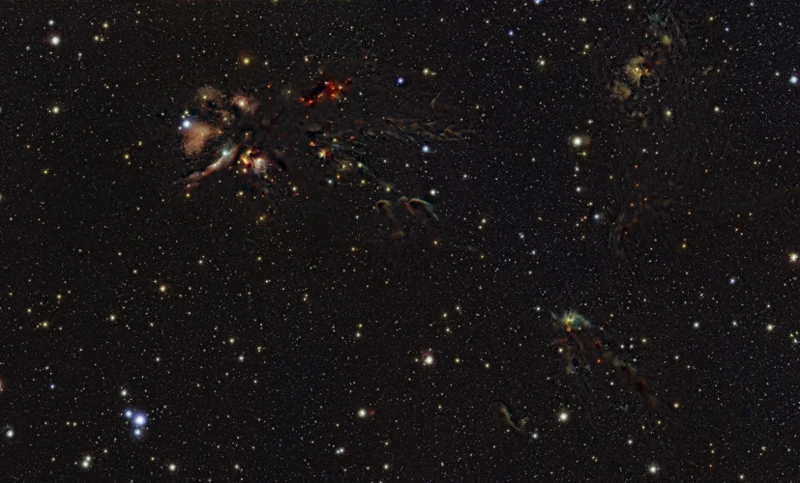
Stellar nurseries, also known as star-forming regions, are the cosmic cradles where new stars are born. These celestial incubators are typically found within vast interstellar clouds of gas and dust. Gravity plays a crucial role in the formation of stars, as it causes these clouds to collapse in on themselves, creating regions of higher density. Within these dense regions, called molecular clouds, fragmentation occurs, leading to the formation of dense cores. Over time, these cores accumulate more mass as surrounding material is drawn in by their gravitational pull. Eventually, the core becomes dense enough to initiate nuclear fusion, and a protostar is born. This marks the beginning of the star’s journey through its life cycle. To learn more about the traits and qualities attributed to celestial bodies in astrology, you can visit /balancing-ophiuchus-traits/.
Formation of Protostars
During the fascinating process of the formation of protostars, a dense core within a molecular cloud begins to collapse under the force of gravity. As the core collapses, it heats up and becomes a contracting mass of gas and dust. This contraction causes the core to spin faster, resulting in the formation of a protostellar disk, which surrounds the central protostar. The protostellar disk plays a crucial role in the growth of the star, as it contains material that can accrete onto the protostar, increasing its mass. This disk acts as a reservoir for material that will eventually form planets around the newly born star. As the protostar continues to accumulate mass and grow, its temperature rises and eventually reaches a critical point where nuclear fusion can begin in its core. At this point, the protostar has transformed into a true star and joins the ranks of the main sequence stars. To delve deeper into the qualities assigned to celestial bodies in astrology, you can check out /ophiuchus-qualities-unveiled/.
Protostellar Evolution
Protostellar evolution is a crucial phase in the life cycle of a star, where a newly formed protostar starts to take shape and undergo significant changes. During this phase, the protostar continues to accumulate mass from its surrounding molecular cloud through gravitational attraction. As the protostar grows, it heats up and begins to emit strong radiation. However, due to the surrounding envelope of gas and dust, much of this radiation is absorbed and re-emitted in the infrared spectrum. This makes it challenging for astronomers to directly observe protostars at optical wavelengths.
Protostellar evolution is characterized by the balance between the inward gravitational force and the outward thermal pressure within the forming star. As the protostar continues to accrete mass, its core temperature gradually rises. Eventually, the core reaches a critical point where the temperature and pressure are sufficient for nuclear fusion reactions to commence. This marks a significant milestone in the protostar’s journey, transforming it into a full-fledged star, initiating its entry into the main sequence phase.
The duration of protostellar evolution varies depending on the mass of the forming star. Lower-mass stars are known to evolve relatively faster, typically taking around several hundred thousand years to reach the main sequence. In contrast, high-mass stars, which have larger reservoirs of gas to accrete, can take millions of years to complete their protostellar evolution.
Throughout this process, magnetic fields play an important role by regulating the accretion of material onto the protostar. The complex interplay between magnetic fields, rotation, and the protostellar disk leads to the formation of powerful outflows of matter known as Herbig-Haro objects. These outflows can extend over significant distances and have a profound impact on the surrounding interstellar medium.
Understanding protostellar evolution is crucial to unraveling the intricacies of star formation and the early stages of stellar evolution. It provides insights into the physical processes that govern the birth and emergence of stars from their nascent molecular clouds. To delve deeper into the interplay between celestial bodies and astrology, you can explore the significance of lucky numbers and their connection /significance-of-lucky-numbers-astrology/ within astrological practices.
Main Sequence Stars
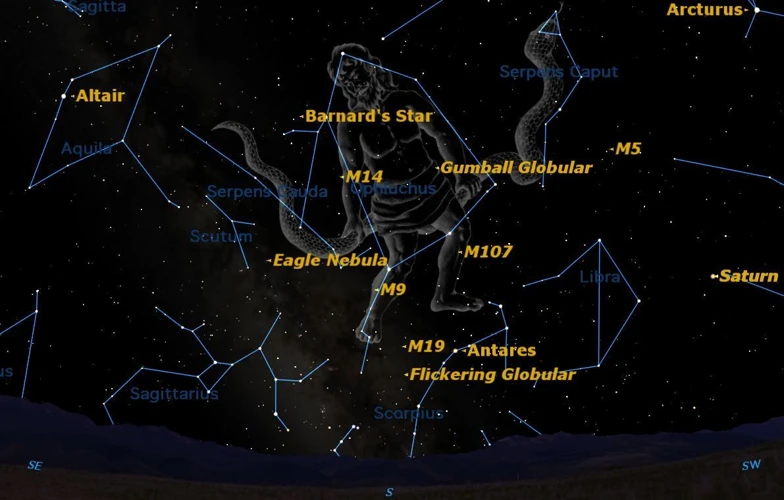
Main sequence stars are the most common type of stars in the universe, including our very own Sun. These stars are in a state of equilibrium, where the force of gravity pulling inward is balanced by the outward pressure caused by nuclear fusion reactions in their cores. The process of fusion involves the conversion of hydrogen atoms into helium, releasing a tremendous amount of energy in the form of light and heat. This energy production sustains the star, giving it the characteristic brightness and stability observed during this phase of its life cycle. Stellar evolution on the main sequence is primarily determined by the mass of the star. Higher mass stars burn through their fuel more quickly, evolving faster and eventually leading to the formation of red giants or supernovae. Conversely, lower mass stars have a longer lifespan, as they consume their fuel at a slower rate. The main sequence phase is an essential period in a star’s life, where it spends the majority of its existence before undergoing further transformations.
Fusion Reactions and Energy Production
Fusion reactions and energy production are at the heart of a star’s existence. Once a protostar forms, the intense gravitational pressure and high temperatures at its core allow for fusion reactions to occur. The primary fusion reaction that takes place in most stars is the fusion of hydrogen nuclei, or protons, to form helium nuclei. This process releases an enormous amount of energy. The core of a star acts as a massive nuclear reactor, where hydrogen atoms collide with enough force and energy to overcome their electrostatic repulsion and merge together. The immense heat and pressure inside the star’s core allows the fusion reactions to take place, unleashing a tremendous amount of energy in the form of light and heat. This energy is what powers the star, providing the necessary radiation and luminosity to sustain its existence. The process of fusion in stars is an ongoing battle between the gravitational force trying to collapse the star and the energy released by the fusion reactions that counteracts the gravitational collapse. It is this delicate balance that allows stars to shine and maintain their stability for billions of years.
Stellar Evolution on the Main Sequence
Once a protostar reaches a state of equilibrium, it enters a phase known as “stellar evolution on the main sequence.” During this phase, the star remains stable by maintaining a delicate balance between gravitational forces pulling inward and the outward pressure exerted by the energy produced through nuclear fusion. Let’s delve deeper into the intricacies of stellar evolution on the main sequence:
1. Energy Production: The main sequence star generates energy through a process called nuclear fusion. The intense heat and pressure at the core cause hydrogen atoms to collide, fusing together to form helium. This fusion reaction releases a tremendous amount of energy in the form of light and heat. The energy produced radiates outward, providing the star with the necessary means to counteract gravitational collapse.
2. Internal Structure: Main sequence stars have distinct layers. The core, where fusion occurs, is surrounded by a radiative zone, where energy is transported through the slow movement of photons. Above the radiative zone lies the convective zone, where energy is transported through the churning motion of plasma. These layers play a crucial role in maintaining the star’s stability.
3. Life Span: The duration of a star’s time on the main sequence depends on its mass. Higher mass stars have more fuel to burn and, therefore, will spend a shorter time on the main sequence compared to lower mass stars. However, as the star consumes its hydrogen fuel, changes occur that will eventually lead to its evolution beyond the main sequence.
4. Habitable Zone: Main sequence stars are of great interest in the search for extraterrestrial life because they provide stable environments within their habitable zones. The habitable zone is the region around a star where conditions are suitable for liquid water to exist on the surface of planets. This zone is crucial for the potential development and sustenance of life.
Understanding stellar evolution on the main sequence is crucial to unraveling the life cycles of stars. It is a dynamic and intricate process that eventually brings about remarkable transformations in these cosmic entities.
Red Giants and Supergiants
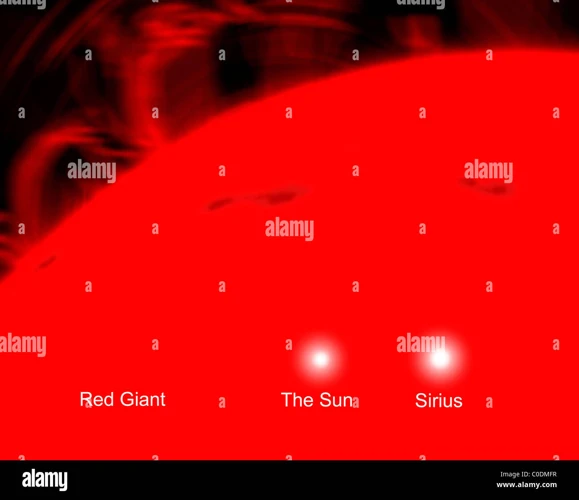
Red Giants and Supergiants are awe-inspiring stages in the life cycle of stars, characterized by their immense size and luminosity. As stars age and deplete their hydrogen fuel, they begin to evolve into red giants. The core of a red giant contracts and heats up, causing the outer envelope to expand outward. This expansion results in the star’s size increasing dramatically, sometimes reaching hundreds of times its original diameter. Red giants are classified into different types based on their mass and other characteristics. Supergiants, on the other hand, are the most massive and luminous stars in the universe. They are extremely rare, accounting for less than 1% of all stars. Both red giants and supergiants play vital roles in the universe as they are responsible for the synthesis and distribution of heavy elements through processes like nucleosynthesis. These magnificent stellar behemoths provide a glimpse into the astonishing forces at play in the cosmos.
Transition from Main Sequence to Red Giant
The transition from the main sequence to a red giant is a pivotal stage in the life cycle of a star. As a main sequence star exhausts its hydrogen fuel in its core, internal changes occur. The core contracts due to gravity, causing it to increase in temperature and density. Simultaneously, hydrogen fusion begins to occur in a shell surrounding the core, resulting in the release of enormous amounts of energy. This energy causes the outer layers of the star to expand, and the star enters the red giant phase. During this phase, the star’s size increases significantly, sometimes swelling up to hundreds or even thousands of times its original diameter. The increased surface area causes the star’s luminosity to rise, and it becomes much brighter. However, despite the expansion, the core continues to contract and increase in temperature. Eventually, the core becomes hot and dense enough to ignite helium fusion, leading to a new phase of stellar evolution. The transition from the main sequence to a red giant marks a critical turning point in the life of a star, setting the stage for further dramatic transformations to come.
Thermodynamics and Nucleosynthesis
Thermodynamics and nucleosynthesis are fundamental processes that occur during the red giant and supergiant stages of stellar evolution. As stars like the Sun exhaust their hydrogen fuel, their cores contract and heat up, causing the outer layers to expand and cool. This expansion leads to the formation of a red giant or supergiant. Within these massive stars, thermonuclear reactions take place, governed by the principles of thermodynamics. The immense temperatures and pressures in the stellar core create conditions favorable for nuclear fusion, where lighter elements such as helium and carbon fuse together to form heavier elements like oxygen and iron. This process, known as nucleosynthesis, is responsible for the production of most elements in the universe. The energy released during these fusion reactions counteracts the force of gravity, temporarily sustaining the star’s outer layers. However, this delicate balance eventually tips, leading to the explosive events known as supernovae. To learn more about the different types of supernovae, you can read the section on ”.
Planetary Nebulae
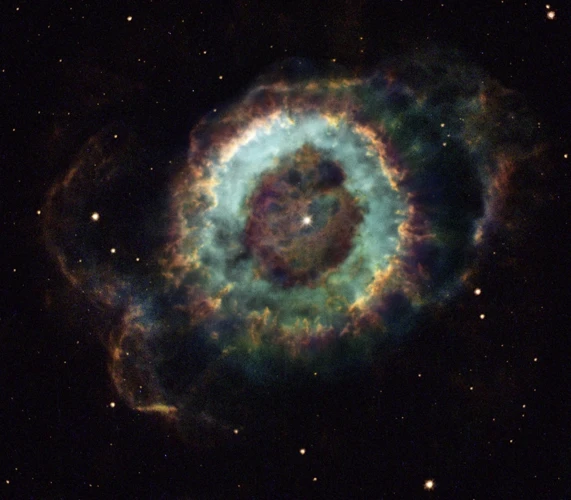
Planetary nebulae are some of the most visually stunning phenomena in the universe. Despite their name, they have nothing to do with planets. Rather, they are the remnants of dying stars in the late stages of their evolution. As a star reaches the end of its life on the main sequence, it undergoes a transformative process that leads to the formation of a planetary nebula. During this phase, the star expands and sheds its outer layers, creating a glowing shell of gas and dust. The expelled material is ionized by the intense radiation emitted by the remaining hot core of the star, causing the nebula to emit a captivating array of colors. Over time, the nebula dissipates, leaving behind a small, hot, and dense object at its center, known as a white dwarf. This celestial spectacle reminds us of the transient nature of existence and the infinite beauty that can arise from the ashes of dying stars.
Expulsion of Outer Layers
During the later stages of a star’s life, it evolves into a red giant or supergiant. One of the key events in this phase is the expulsion of its outer layers. As the star’s core begins to run out of nuclear fuel, it undergoes significant changes that ultimately result in the destruction of its outer envelope. The core contracts, causing the outer layers to expand, creating a massive shell of gas that surrounds the shrinking core. This expansion is driven by the intense radiation and energy produced by the core. The outer layers of the star become unstable, and powerful stellar winds begin to blow away the gas and dust into space. These stellar winds carry with them a variety of elements and heavy metals that were synthesized within the star’s core during its lifetime, enriching the surrounding interstellar medium. The interplay between these stellar winds and the remaining core continues until the star has ejected most of its outer layers, leaving behind a compact remnant at its core. This spectacular phase of a star’s life leads to the formation of beautiful planetary nebulae that showcase the remnants of the expelled materials.
White Dwarf Formation
White dwarf formation is the final stage in the life cycle of a star with a mass similar to that of our Sun. After a red giant or supergiant has shed its outer layers in a planetary nebula, what remains is the core, which undergoes a dramatic transformation. This core, composed mainly of carbon and oxygen, collapses under its own gravity. As the core collapses, the electrons within the atoms are forced into a state of extreme density, and they become packed tightly together. This causes the core to shrink, while the outer layers of the star are expelled into space. The intense pressure from the shrinking core counteracts the gravitational collapse, leading to a state of equilibrium known as electron degeneracy pressure. The result is a dense, hot, and incredibly compact object – a white dwarf. Despite their small size, white dwarfs are incredibly dense and carry a significant amount of mass. Without any nuclear fusion occurring, a white dwarf gradually cools down over billions of years, eventually becoming a dim and fading remnant of a once fiery star. To delve deeper into the significance of lucky numbers in astrology, you can read the article /significance-of-lucky-numbers-astrology/.
Supernovae
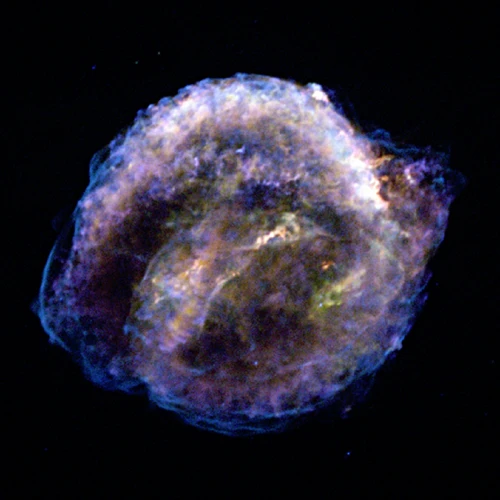
Supernovae, the explosive deaths of stars, are some of the most cataclysmic events in the universe. These stellar explosions occur when a massive star reaches the end of its life cycle. There are two main types of supernovae: core collapse supernovae and thermonuclear supernovae. In the case of a core collapse supernova, the core of the star undergoes a sudden and dramatic collapse, causing a shockwave that rips through the outer layers of the star, releasing an immense amount of energy. In contrast, thermonuclear supernovae occur in binary star systems, where a white dwarf star accretes matter from its companion until it reaches a critical mass, triggering a runaway nuclear fusion reaction. This results in a tremendous explosion that outshines an entire galaxy. The debris and elements ejected in these explosive events play a vital role in the formation of new stars and planetary systems. Understanding the different types of supernovae is essential in unraveling the mysteries of the universe and its ever-evolving nature. To delve deeper into the various types of supernovae, you can explore the article /types-of-supernovae/.
Core Collapse Supernovae
Core collapse supernovae are cataclysmic events that occur when massive stars reach the end of their lives. These spectacular explosions are the result of the gravitational collapse of a massive star’s core. As the star burns through its nuclear fuel, the tremendous pressure generated by the fusion reactions maintains a delicate equilibrium, preventing the core from collapsing under the force of gravity. However, once the core has exhausted its nuclear fuel, this delicate balance is disrupted. With no outward pressure to counteract gravity’s relentless pull, the core collapses under its own weight. This collapse creates intense heat and pressure, causing an explosive rebound known as a supernova. In the core collapse supernova, the core’s collapse is halted by the formation of a neutron star or, in some cases, a black hole. The outer layers of the star are violently ejected into space, releasing an immense amount of energy and creating a brilliant display of light and radiation. Core collapse supernovae are essential for the enrichment of the universe with heavy elements and the dispersal of these elements into space. The remnants of these explosions, known as supernova remnants, serve as cosmic laboratories for studying the physics of extreme conditions and the formation of new generations of stars and planetary systems.
Types of Supernovae
Types of Supernovae:
– Type Ia Supernovae: Type Ia supernovae occur in binary star systems where one star is a white dwarf and the other is a main sequence star or a giant star. When the white dwarf reaches a critical mass, it undergoes a runaway thermonuclear explosion, completely destroying itself. Type Ia supernovae have consistent luminosities, making them valuable tools for measuring cosmological distances and studying the expansion of the universe.
– Type II Supernovae: Type II supernovae, also known as core-collapse supernovae, are the result of the explosive death of massive stars. As these stars run out of nuclear fuel, their cores undergo gravitational collapse, leading to a rebound effect. This collapse and rebound generate a powerful shockwave that propagates through the star, ultimately tearing it apart in a spectacular explosion. Type II supernovae exhibit a wide range of luminosities, and their spectra show prominent hydrogen lines.
– Type Ib/c Supernovae: Type Ib/c supernovae are similar to Type II supernovae, but they lack strong hydrogen lines in their spectra. This is because the progenitor stars of Type Ib/c supernovae have already lost their outer layers of hydrogen through stellar winds or interactions with a companion star. These supernovae are believed to originate from massive Wolf-Rayet stars or stripped-envelope stars. They are characterized by the presence of helium and other elements in their spectra. The exact mechanisms behind Type Ib/c supernovae are still under investigation, but they are thought to involve the collapse of highly evolved, massive stars. It is important to study the different types of supernovae to gain insights into the stellar population, nucleosynthesis processes, and the evolution of galaxies in the universe.
Neutron Stars and Black Holes
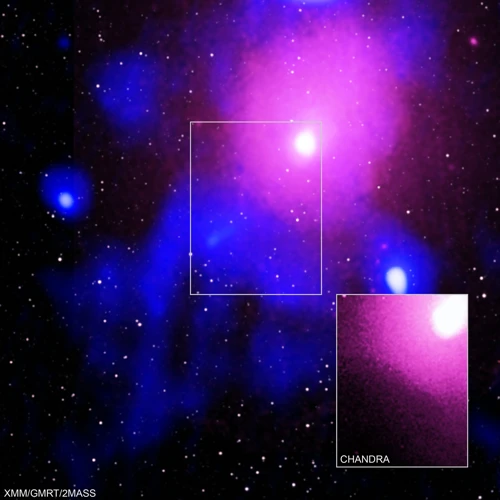
Neutron stars and black holes are the enigmatic end results of stellar evolution, representing the most extreme and mysterious objects in the universe. When a massive star reaches the end of its life, a cataclysmic explosion known as a supernova occurs, leaving behind either a neutron star or a black hole. A neutron star is incredibly dense, with a mass comparable to that of the Sun packed into a sphere just a few kilometers in diameter. These exotic objects are composed primarily of tightly packed neutrons, hence the name. They possess intense gravitational forces and can spin rapidly, emitting beams of electromagnetic radiation that are visible as pulsars. On the other hand, a black hole is formed when a massive star collapses under the force of its own gravity, creating a region of spacetime with such strong gravity that nothing, not even light, can escape. It is surrounded by an event horizon, beyond which lies a singularity, a point of infinite density. Exploring the nature of these cosmic marvels allows us to delve into the deepest secrets of space and time. Visit /significance-of-lucky-numbers-astrology/ to discover more about the fascinating connections between astrology and lucky numbers.
Formation of Neutron Stars
The Formation of Neutron Stars is an extraordinary process that occurs following the explosive death of a massive star in a supernova event. When a star reaches the end of its life, its core collapses under immense gravitational pressure. During this collapse, protons and electrons are squeezed together, resulting in the formation of dense matter known as neutron-rich material. This neutron-rich material is tightly packed, with protons and electrons combining to form neutrons. As the core continues to collapse, it reaches a critical point where the force of gravity is balanced by the repulsive force between neutrons, preventing further collapse. This balance leads to the formation of a neutron star, a celestial object with an incredibly high density and a mass several times that of our Sun, packed into a sphere only about 20 kilometers in diameter. Neutron stars exhibit fascinating properties, such as intense magnetic fields and rapid rotation. The intricate process of neutron star formation is a testament to the fundamental forces and dynamics at play in the cosmos.
Black Holes: The End of Stellar Evolution
Black holes are the enigmatic end point of stellar evolution, representing the most extreme objects in the universe. When a massive star exhausts its nuclear fuel, the balance between the inward force of gravity and the outward force of radiation collapses. The core undergoes a catastrophic gravitational collapse, resulting in the formation of a black hole. Black holes are characterized by their immense gravitational pull, so powerful that nothing, not even light, can escape their grasp. The boundary beyond which no escape is possible is known as the event horizon. As matter falls into a black hole, it is compressed to an infinitely small point at the center, known as a singularity. Surrounding the singularity is the region where gravity is so intense that spacetime is curved to an extreme degree, creating a phenomenon called spacetime distortion. This distortion causes time to slow down significantly, leading to the concept of time dilation near black holes. Despite their notorious reputation, black holes play a crucial role in the cosmos, affecting the evolution of galaxies and acting as cosmic recycling centers. To delve into the qualities and significance of lucky numbers in astrology, you can explore /significance-of-lucky-numbers-astrology/.
Conclusion
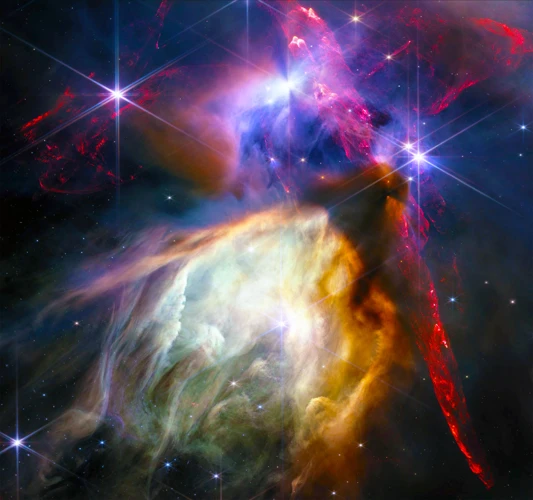
The life cycles of stars take us on a mesmerizing journey through the birth, evolution, and eventual death of these celestial giants. We have delved into the fascinating process of stellar nurseries, where the breathtaking transformation from interstellar clouds to protostars occurs. The journey continues as we witness the fusion reactions and remarkable energy production that sustain main sequence stars, and the eventual transition of these stars into red giants and supergiants. Along the way, we’ve explored the expulsion of outer layers in planetary nebulae, leading to the formation of white dwarfs. The sheer power of supernovae, such as core collapse supernovae, leaves us in awe. And finally, we arrive at the hauntingly mysterious realm of neutron stars and black holes, where the end of stellar evolution unfolds. The intricate processes and forces governing the life cycles of stars remind us of the vastness and complexity of the universe. As we conclude our cosmic exploration, we are left with a profound sense of wonder and a deeper appreciation for the celestial wonders that grace our skies.
Frequently Asked Questions

1. How are stars formed?
Stars are formed within massive clouds of gas and dust called molecular clouds. Gravity causes these clouds to collapse, leading to the formation of dense cores. Over time, these cores accumulate more mass and become protostars.
2. What is a protostar?
A protostar is a young star in the early stages of formation. It is formed when a dense core in a molecular cloud reaches a critical mass and begins to undergo nuclear fusion, releasing immense amounts of energy.
3. What is the main source of energy in stars?
The main source of energy in stars is nuclear fusion. Through this process, hydrogen atoms combine to form helium, releasing a tremendous amount of energy in the form of light and heat.
4. How long do stars stay on the main sequence?
The amount of time a star spends on the main sequence depends on its mass. Higher-mass stars have shorter main sequence lifetimes, typically ranging from a few million to a few billion years. Lower-mass stars, like our Sun, can stay on the main sequence for billions of years.
5. What happens to a star after it leaves the main sequence?
After leaving the main sequence, a star expands and evolves into a red giant or supergiant. This transformation occurs as hydrogen fuel in the stellar core depletes, causing the core to contract, and the outer layers to expand.
6. What causes a supernova?
A supernova occurs when a massive star undergoes a catastrophic explosion at the end of its life cycle. This explosion is triggered by the collapse of the star’s core, resulting in a release of an enormous amount of energy and the dispersal of heavy elements into space.
7. What is a white dwarf?
A white dwarf is the remnant of a low-mass star after it has exhausted its nuclear fuel. It is a hot, dense stellar core composed mainly of carbon and oxygen. Despite its name, a white dwarf appears as a faint, glowing object.
8. Can a star become a black hole?
Yes, a star can become a black hole if it has a mass several times greater than that of our Sun. When such a massive star exhausts its nuclear fuel, its core collapses under its own gravity, and it becomes a black hole—a region in space with gravitational forces so strong that nothing, not even light, can escape.
9. What is a neutron star?
A neutron star is the extremely dense core that remains after a massive star has gone supernova. It is composed almost entirely of densely packed neutrons and is extraordinarily compact and heavy. Neutron stars are known for their rapid rotation and powerful magnetic fields.
10. Are all stars the same?
No, stars come in different sizes, masses, and colors. They vary in temperature, luminosity, and lifespan. The characteristics of a star depend on its mass and stage in its life cycle, resulting in a diverse array of celestial objects that continuously shape the universe.
References
- How stars are born and die
- What is the life cycle of a star from birth to death?
- Life Cycle of a Star – Seven Main Stages of a Star
Frequently Asked Questions

1. How are stars formed?
Stars are formed in stellar nurseries, which are regions of space where large clouds of gas and dust come together under the force of gravity.
2. What happens during the birth of a star?
During the birth of a star, a dense core known as a protostar forms within the collapsing cloud. The protostar grows as it accretes more matter from its surroundings.
3. How does a protostar evolve?
A protostar evolves by undergoing gravitational contraction and heating up. It gradually reaches a point where the core becomes hot and dense enough for nuclear fusion reactions to begin.
4. How do fusion reactions power main sequence stars?
Fusion reactions occur in the core of main sequence stars, where hydrogen atoms combine to form helium, releasing a tremendous amount of energy in the process.
5. What determines the lifespan of a main sequence star?
The lifespan of a main sequence star is determined by its mass. Higher mass stars burn through their fuel more quickly and have shorter lifespans, while lower mass stars burn more slowly and can exist for billions of years.
6. What causes a star to become a red giant?
A star becomes a red giant when it exhausts its hydrogen fuel in the core. The core contracts while the outer layers expand, causing the star to increase in size and become cooler in temperature.
7. How do red giants contribute to nucleosynthesis?
In red giants, nuclear reactions continue to occur, creating heavier elements like carbon, oxygen, and even heavier ones like iron. These elements are released into space when the red giant sheds its outer layers.
8. What happens during a core collapse supernova?
A core collapse supernova occurs when a massive star’s core runs out of nuclear fuel and can no longer support its own weight. The core collapses inward and then rebounds, causing a powerful explosion that can outshine an entire galaxy.
9. How is a neutron star formed?
During a core collapse supernova, if the remaining core of the star is between about 1.4 and 3 times the mass of the sun, it will collapse further and form a neutron star, which is an incredibly dense and compact object.
10. What is a black hole?
A black hole is the end result of the collapse of a massive star. It is a region of spacetime where gravity is so strong that nothing, not even light, can escape from it. The collapse creates a singularity, a point of infinite density at the center of the black hole.






